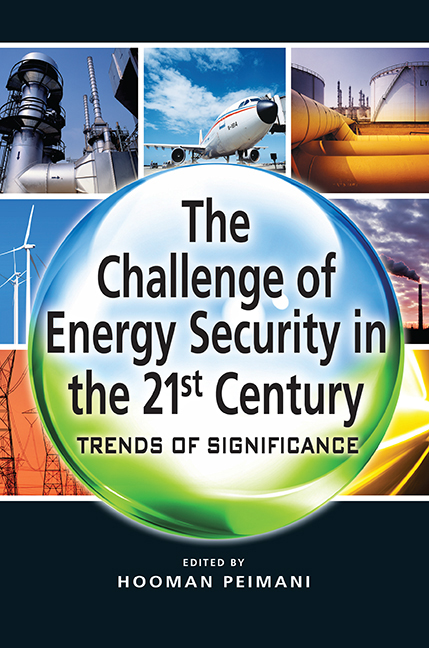Book contents
- Frontmatter
- Dedication
- Contents
- List of Tables and Figures
- List of Maps
- List of Acronyms
- Acknowledgements
- About the Contributors
- INTRODUCTION
- Global Trends in Renewable Electricity, Renewable Fuels, and Markets for Renewable Heating and Cooling
- Resource Mutualism or Codependence? The Water-Energy Nexus in Asia
- OPEC's Long-Term Role in Affecting Energy Security
- Whither a Gas OPEC? Not in the Pipeline
- Shared Interests or Competing Actions: What Drives Energy Security Cooperation between Asia and Europe?
- CONCLUSION
- Index
Whither a Gas OPEC? Not in the Pipeline
Published online by Cambridge University Press: 21 October 2015
- Frontmatter
- Dedication
- Contents
- List of Tables and Figures
- List of Maps
- List of Acronyms
- Acknowledgements
- About the Contributors
- INTRODUCTION
- Global Trends in Renewable Electricity, Renewable Fuels, and Markets for Renewable Heating and Cooling
- Resource Mutualism or Codependence? The Water-Energy Nexus in Asia
- OPEC's Long-Term Role in Affecting Energy Security
- Whither a Gas OPEC? Not in the Pipeline
- Shared Interests or Competing Actions: What Drives Energy Security Cooperation between Asia and Europe?
- CONCLUSION
- Index
Summary
1. INTRODUCTION
At the close of the year 2009, the natural gas market appears poised for significant changes to the industry. From the macroeconomic perspective, growing confidence in the sustainability of a post-recession recovery heralds the promise of an increase in energy demand. However, this is tempered by an overhang of fiscal indebtedness and trade deficit plaguing developed nations such as United States and many countries in the European Union.
On the environmental front, if binding climate-change policy changes were to ensue from the Copenhagen negotiations in December 2009, it could have an indelible impact on natural gas markets. As a relatively cleaner form of fossil fuel, natural gas is commonly held to be a suitable “transitional fuel” bridging the global switch from fossil fuels to renewable energy.
There are also significant developments within the natural gas markets over the last decade. Infrastructure investment facilitating the trading of liquefied natural gas (LNG) has been ramped up. Some examples include the construction of receiving and regasification terminals in the gulf coast of the United States and the build-up of liquefaction capacity by Qatar.
Most recently, technological breakthroughs have reduced the cost of extracting gas from shale, rendering shale gas production in North America commercially viable. As such, with an increase in supply potential, coupled with a global energy demand that has yet to recover from the financial crisis started in 2007, natural gas prices were depressed throughout the year 2009 when this chapter was prepared.
Low gas prices are a major concern for gas-producing countries, and this sparks the worry among gas importers that gas exporters could potentially unite in a cartel to control the pricing of natural gas internationally. Against this background, this chapter investigates the feasibility and potential for forming a “Gas OPEC” in the foreseeable future.
- Type
- Chapter
- Information
- The Challenge of Energy Security in the 21st CenturyTrends of Significance, pp. 105 - 131Publisher: ISEAS–Yusof Ishak InstitutePrint publication year: 2011



